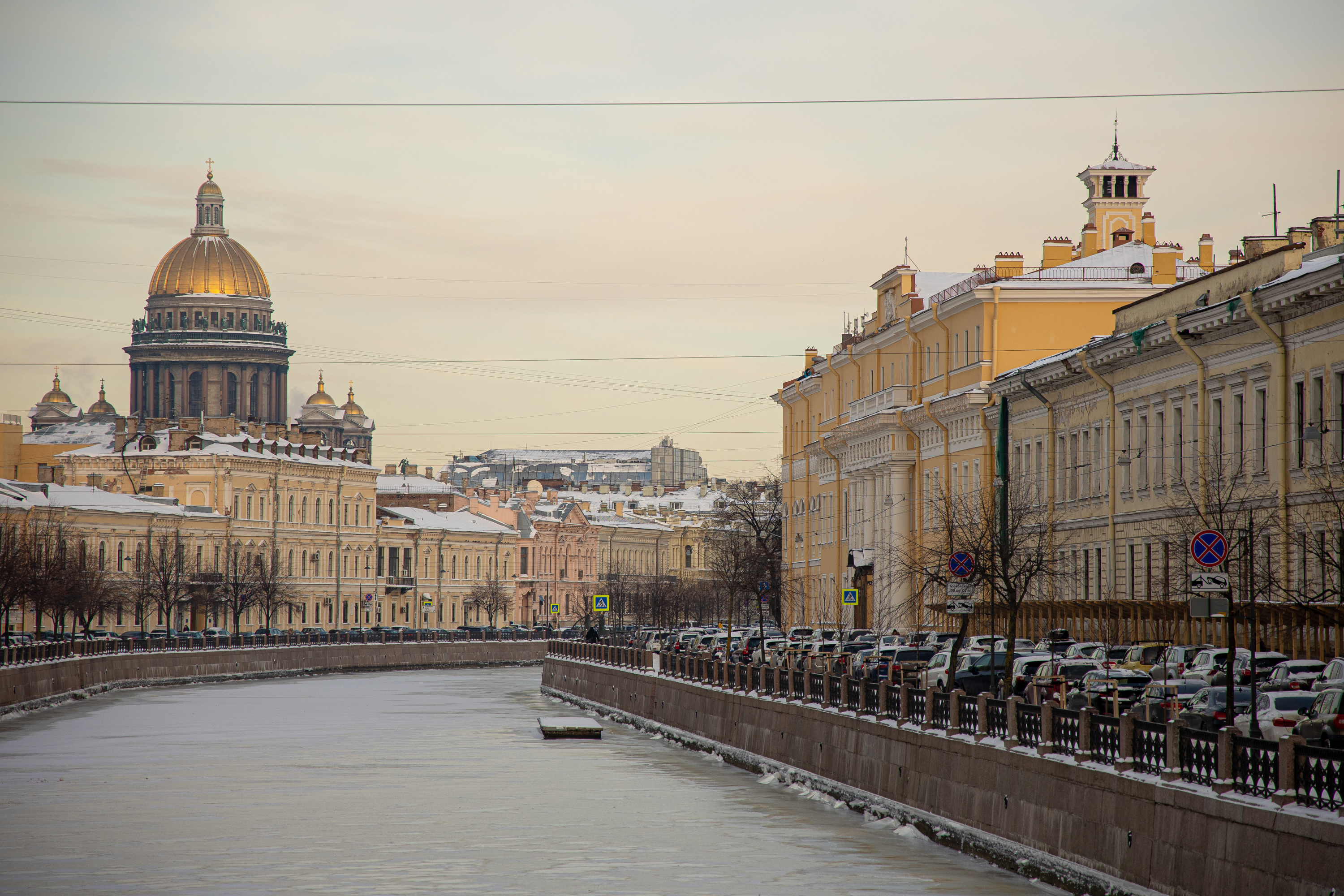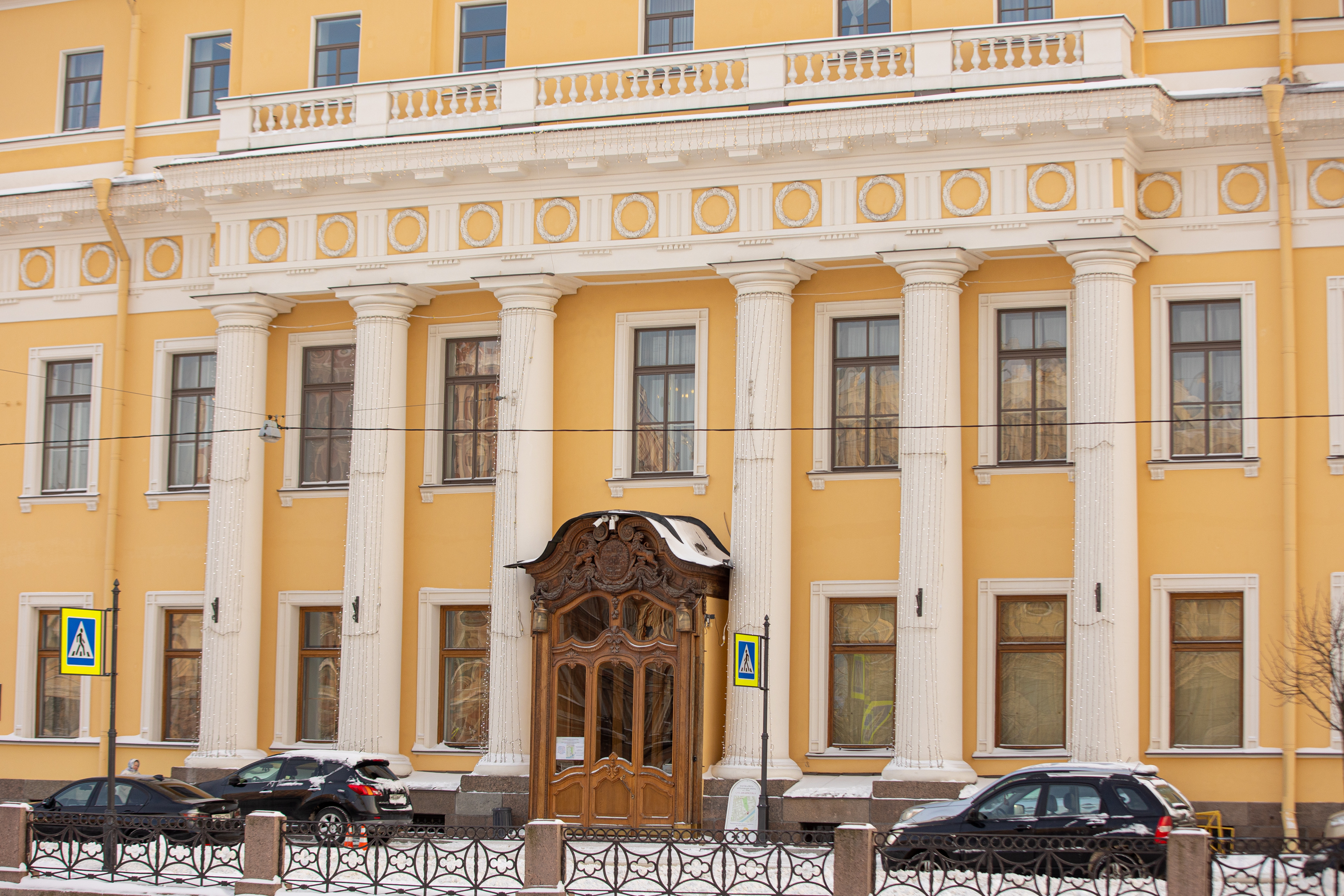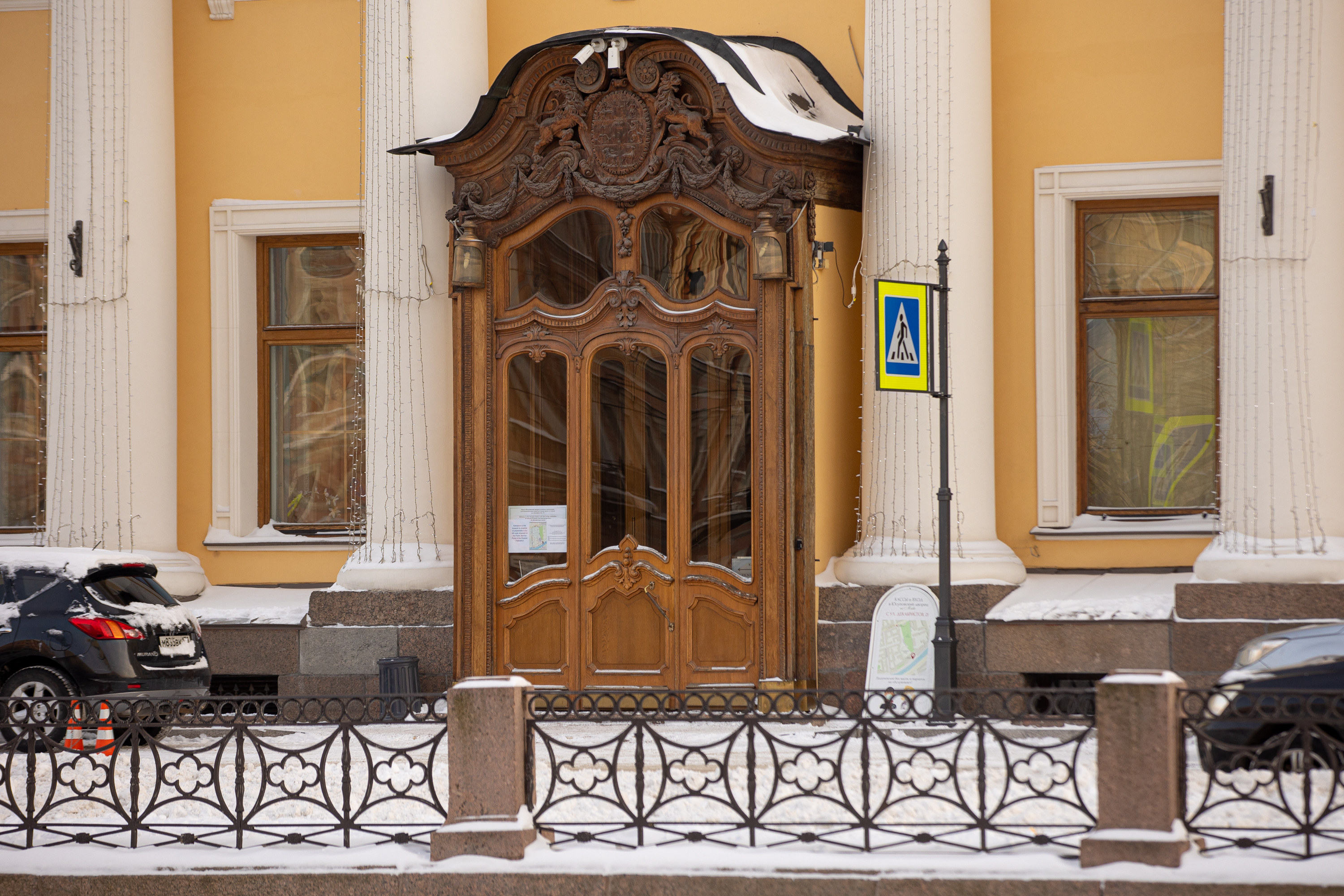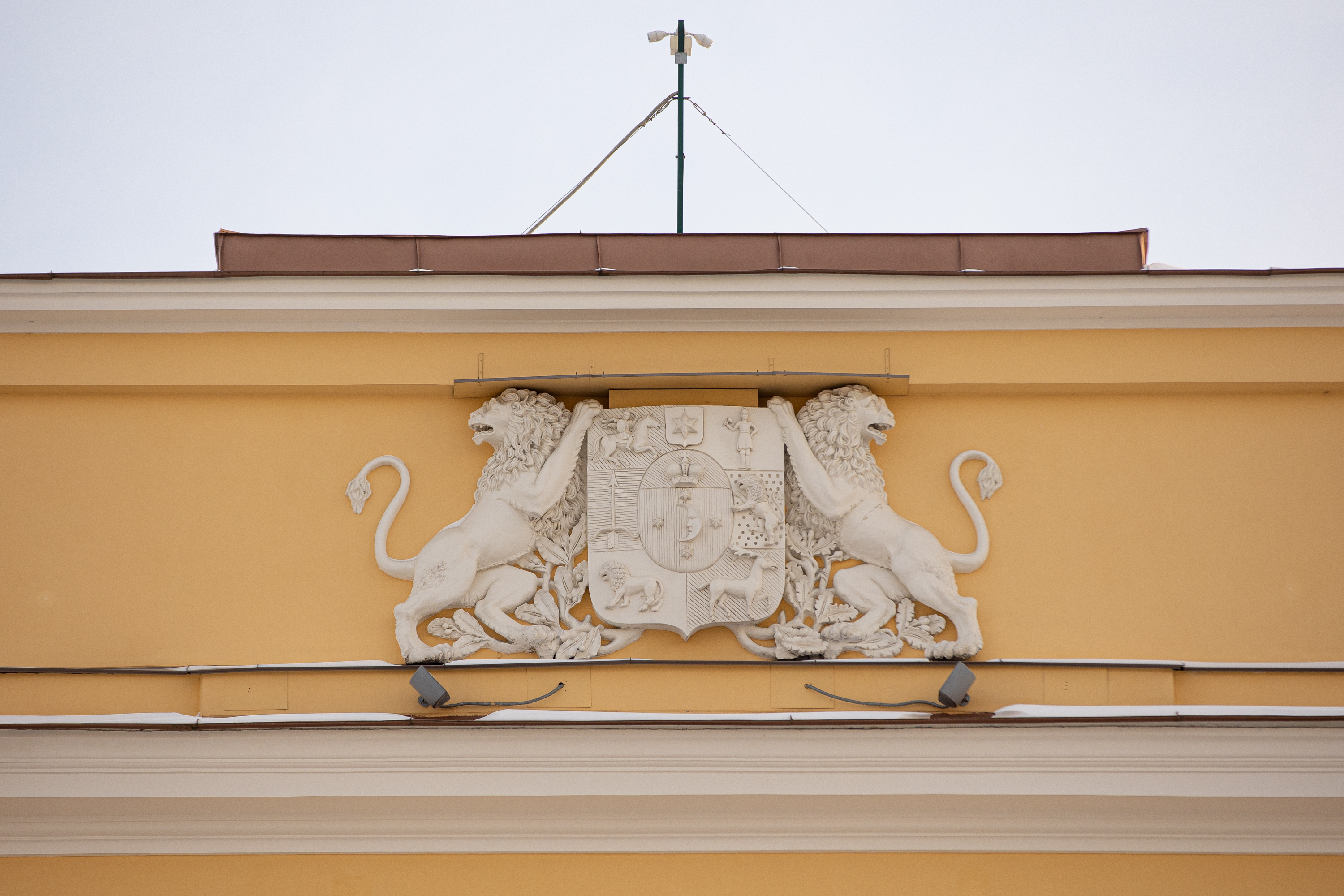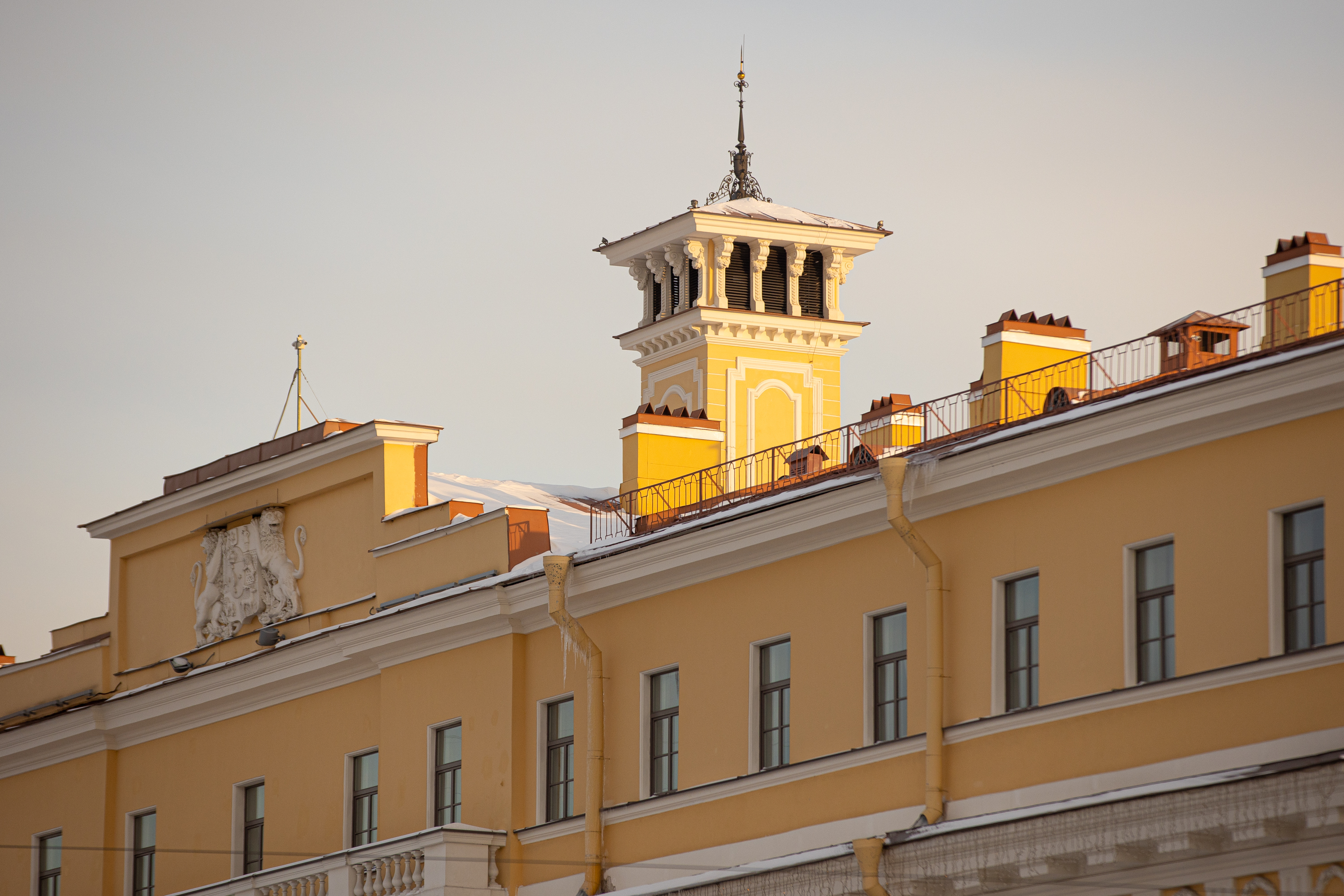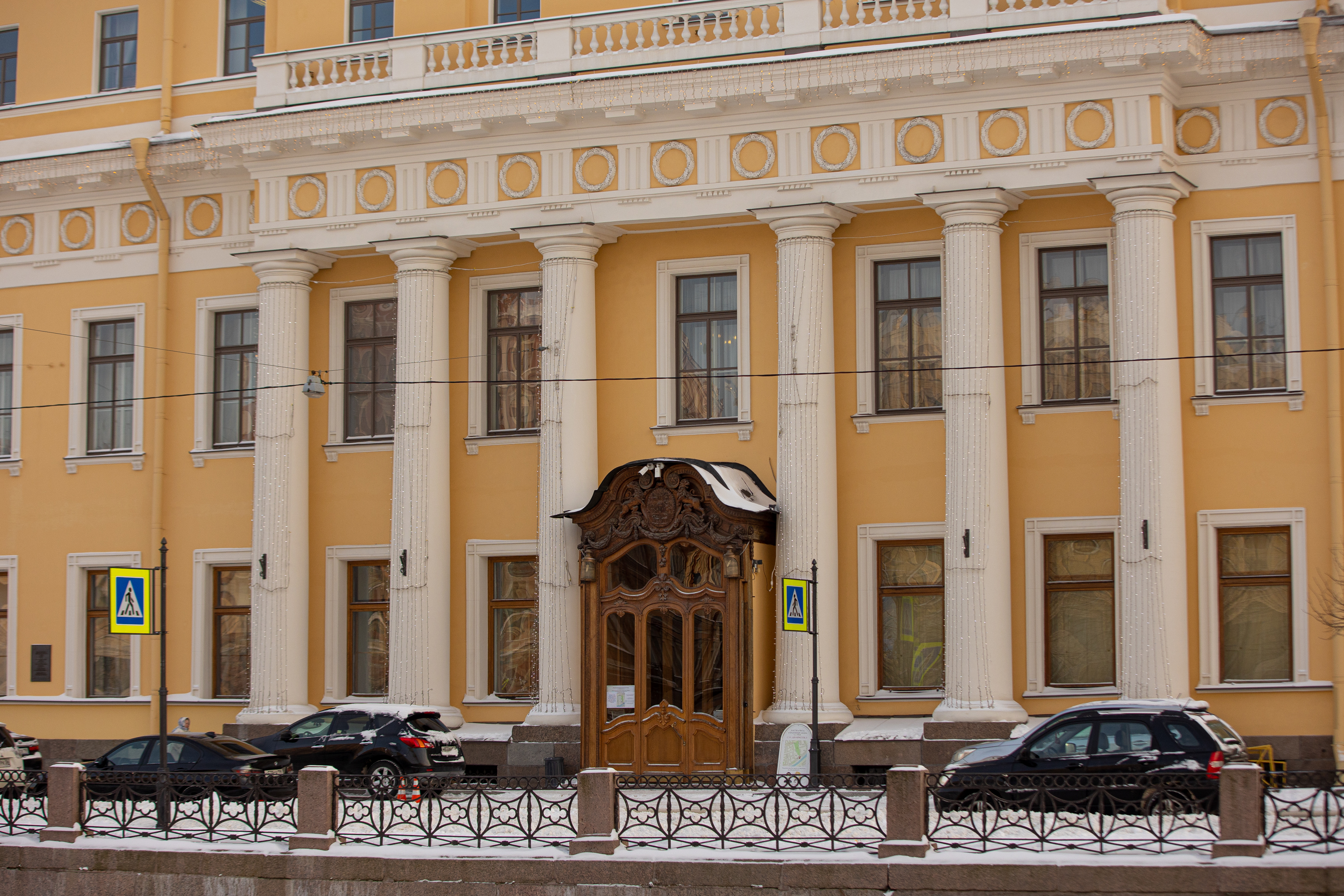 Back
Back
The Yusupov Palace

Saint Petersburg, nab. reki Moiki, 94
The Yusupov Palace is a unique 18th – 20th century’s architectural ensemble and a cultural and heritage site of federal significance acclaimed as the “Encyclopedia” of St. Petersburg aristocratic interior.
The facade of the elegant Yusupov Palace on the Moika hides an old city estate stretching to Offitserskaya Street. Built in the 70s of 18th century by project of architect J.-B. Wallen Delamot for count A.P. Shuvalov, the estate was much smaller than today's palace. The main courtyard with a colonnade and three gates and the Garden Pavilion have survived almost unchanged to our time. After the count, the estate was owned by A.V. Branitskaya, lady attached to the Catherine II, and in 1830 she sold this house to the Yusupov princes with all the furnishings. There was also an old garden that extended to Offitserskaya Street.
The history of the palace and the estate dates back to the Petrine era, to the period of the birth of the young Northern capital. The complex was created over the course of almost two centuries. Outstanding Russian and foreign architects worked here. Five succeeding generations of the Yusupov princely dynasty owned the estate and the Palace from 1830 to 1919. Many glorious moments of Russian and Saint Petersburg history are associated with the residence of the Yusupov family on the Moika River.
The Yusupovs were one of the richest families in Russia. Researchers believe that their family was richer than the Romanovs. The building on the Moika became the property of the family in 1830. The princes spent part of the money on the acquisition of works of art for the palace gallery. Many bright pages of Russian and Saint Petersburg history are connected with the family residence on the Moika.
The Palace went down in Russian history as the place where Grigory Rasputin, a Siberian peasant, mystical spiritual mentor and friend of the family of Emperor Nicholas II was assassinated. The tragedy broke out on the night of December 17, 1916 in the residential half of the young Prince Felix Yusupov. Now there is a historical and documentary exposition in these rooms.
With the beginning of the blockade, an evacuation hospital was located in the palace: hospital beds and stoves were installed in the front rooms and living rooms, the soot from which settled on the walls and floors, and the medical staff had to work in conditions of constant bombing and artillery shelling. Several bombs that hit the palace in the autumn of 1941 caused the greatest damage to its interiors, walls and foundations. One of them literally “pierced” the building, destroying the roof, the interior of the Green Living Room, the library and exploded in the basement of the palace. The fire destroyed the interior of the “Preciosa” hall.
The House Church was located on the third floor of the princely house of the Yusupovs. It was arranged and designed according to the project of the academician of architecture V.A. Kenel, consecrated in March 1881 and operated until 1917. All significant events of the family of the Yusupov princes took place in the church. In 1926, the church ceased to exist, in the 1930s it was completely dismantled and turned into a lecture hall.
The revival of the palace began already in 1943: architectural measurements and conservation of damaged objects were carried out, and thanks to the efforts of the palace employees, its lighting and heating were restored, windows were inserted and the walls were washed from burning and soot. In 1946, work on the restoration and preservation and a large-scale restoration of the Yusupov Palace began, which was headed by restorer and architect Irina Benois. Lavishly decorated interiors preserved and restored through the painstaking effort of talented Saint Petersburg restoration specialists welcome Russian and foreign aficionados of history, art, music and theater. Today the Yusupov Palace is one of the few surviving aristocratic mansions of Saint Petersburg featuring authentic State rooms, Art Gallery halls, a miniature Home Theatre and the Yusupov family luxurious living quarters.
The Yusupov Palace impresses with its charming halls, living rooms, offices and boudoirs, furnished and equipped with the finest taste and the greatest craftsmanship. The rooms are decorated with French tapestries and porcelain, Venetian mirrors and wood carvings, authentic works by Rembrandt, Rubens and other great masters of the decorative and visual arts. The book collection of the Yusupov family was one of the largest and most valuable in Russia. The palace’s collection included the Bible on parchment of 1462 as well as ancient medals coins. A secret door was discovered behind one of the storage cabinets in 1925. 27 letters from Pushkin were found in a secret treasury.
The visitors of the palace will see the White-Columned or Banquet Hall, the Dance Hall, the Red Drawing Room, the Blue Drawing Room, the Green Drawing Room, the Princess's Bedroom, the Large Rotunda, the Nicholas Hall, the Preciosa Hall, the Antonio Viga Hall, the Drawing Room of Henry II, the Prince's office and the Library, the Turkish Office, White office, Moorish drawing room, Oak dining room, Dressing room, Prince's living quarters, Home theatre.
Additional information
Entrance for individual visitors and small groups from Dekabristov street, 21
Entrance to performances from Moika embankment, 94
Accessible environment
Accessible for people with disabilities.
For people in wheelchairs, a tour of the palace is available by prior arrangement with the administrators: the employees of the palace will help lower or raise the wheelchair. On the territory of the estate, information and tactile signs for people with visual impairments have been installed: at the entrance there is an additional sign in Braille about the opening hours of the palace, at the ticket office of the palace additional information about the palace, a detailed plan of the estate indicating outbuildings, directing arrows are available.


